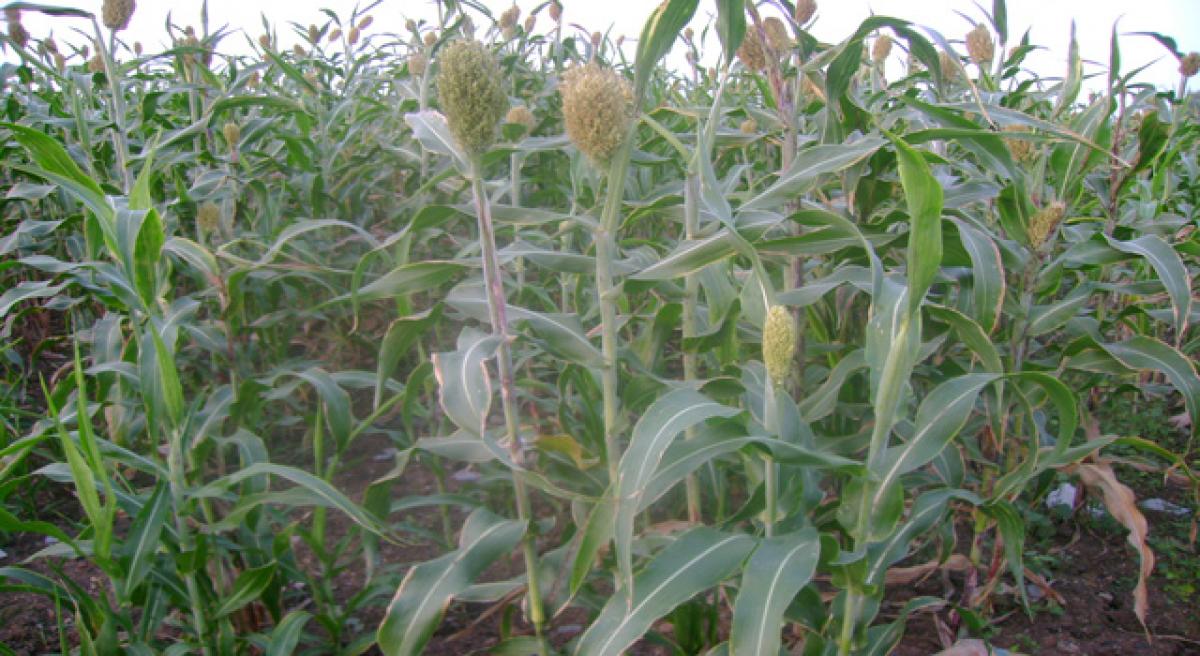Live
- Subtle Ideas in A Poetic Manner
- TTD moves closer to resolve non-Hindu employees’ row
- Creative Economy: Economic impact of cultural events
- Mangaluru police nab babitual offender in Ullal
- Alternative learning redefining education system in India: Sonam Wangchuk
- Rich tributes paid to freedom fighter Narasayamma
- Actor Ali Issued Notices Over Unauthorized Farmhouse Construction
- Mangaluru airport bids adieu to CISF canine Hero Jack
- Congress clinches landmark victory
- AP Chambers to unveil State’s biz potential
Just In

The day is not far when millets would become staple for millions.
Anantapur: The day is not far when millets would become staple for millions. For, widespread cultivation of millets, substantial increase in production, encouraging cottage industries that deal in millet-related products and promotion of value-added products by involving young entrepreneurs are among the slew of initiatives launched by the State government to bring millets to the centre-stage of nutrition basket.
In all, 12 NGOs have been involved. Each NGO is given Rs.3 lakh in grant for promotion of millets cultivation. On a pilot basis, the project is spread over 20 mandals in the district. Presently, 2.54 lakh hectares are covered by millets in the district. This year another 10,000 hectares are being added to the area under millets. The idea is to bring millets to the common man's kitchen and make it a part of the people's food basket.
The government plans to supply millets to people soon through fair price shops and make millet diet compulsory for children of residential government schools and colleges. The Centre and the State government had formulated action plans for the revival of age-old food practices and increase cultivation of millets in a phased manner.
Agriculture Technology Mission Agency(ATMA) project director Naganna told 'The Hans India' that entrepreneurship would be developed to bring out millet products through establishing cottage industries. Home-made millet products consumption would be encouraged to replace junk food and stuff that is hazardous to human health.
In rural areas, people who used to consume healthy millets stuff have of late taken a fancy to consuming urban junk food. ATMA would therefore be working with government departments and residential institutions to popularise millet food. Soon district collector Veera Pandian would issue instructions to include millets in the children's regular diet.
The State government, through its Department of Agriculture, has drawn up plans to expand the area under millets at the district level. Under the Millets Area Expansion Plan, as many as 20 mandals have been identified in the district and 12 NGOs have been roped in to execute the plan and to motivate farmers to increase cultivation in every mandal. Each NGO is expected to encourage cultivation in 10,000 acres over the next five years.
Clusters in every mandal The normal millets area in the district until recently was 35,000 hectares. As part of the push, the area under millets cultivation has of late jumped to more than 100,000 hectares. Farmers Training Centre deputy director Jayachandra says that at a recent meeting of top agriculture department functionaries, it was decided to supply millets to white card holders through the Public Distribution System and make millets an essential part of menu in all government hostels and residential schools so as to mandatorily restore the rich diet to children.
Caring People Foundation executive president Indira Patnaik told 'The Hans India' that the government could have introduced supply of millets, instead of rice, through the public distribution system. Supply of rice at Rs.2 had boosted rice consumption to such an extent that it interfered with the millets diet of Scheduled Tribes in tribal areas and also the Scheduled Caste communities’ eating habits.
Sorghum, finger millet, barnyard millet, pearl millet and other such items, when processed and polished, are sold at double the price in the market. The government is offering training to farmers in the millet clusters on making 20 different items as part of value addition to the millets. The value-added products are in great demand among all sections of society. Proteins, minerals, calcium, magnesium and iron form part of the rich and nutritious diet.
To popularise millets-based products, marketing tie-ups with companies are also being arranged. Millets are normally 70-day crops. Farmers can raise five crops in a year. The market prices are highly remunerative. Processing centres would be set up in the mandals concerned involving unemployed youth. Polishing of millets would be done at the cluster vicinity itself as they are in high demand among consumers.
Joint Director of Agriculture Srirama Murthy told 'The Hans India' that agriculture officers were creating awareness among farmers to take to millets cultivation as they are highly remunerative. The Centre too had announced minimum support price for millets.
By Ravi Prasad Benjamin

© 2024 Hyderabad Media House Limited/The Hans India. All rights reserved. Powered by hocalwire.com







